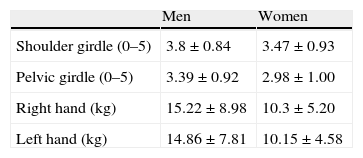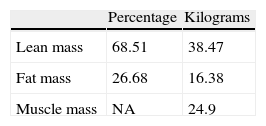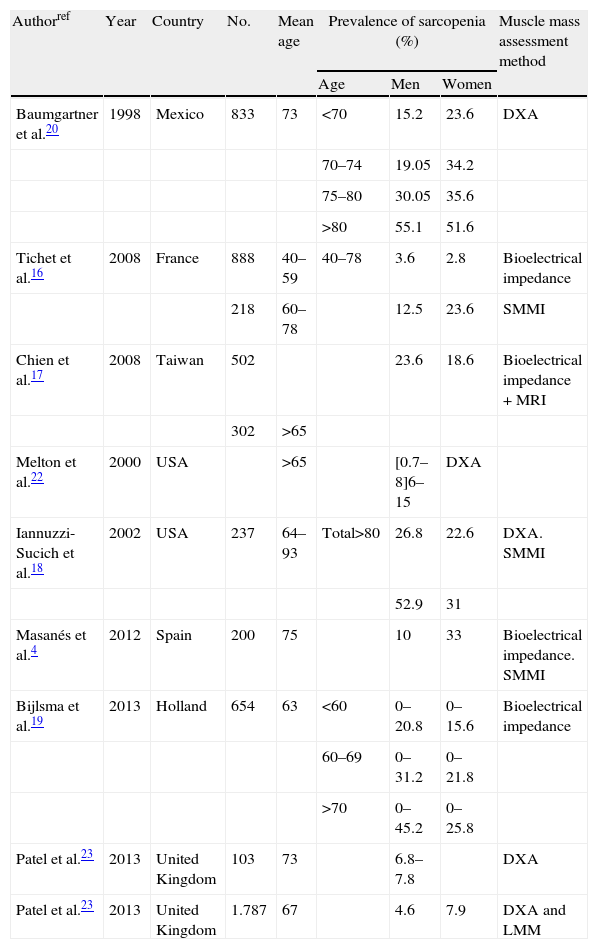Sarcopenia is characterized by the loss of skeletal muscle mass and strength and represents a risk factor for frailty, loss of independence and physical disabilities. This study aimed to assess the prevalence of sarcopenia in a population of patients admitted to a media and long-stay unit.
Patients and methodsDescriptive, cross-sectional observational study that included 166 patients over 18 years who were admitted consecutively for a year to palliative care, convalescence or rehabilitation. Administrative and anthropometric data were recorded. Sarcopenia detection was performed by assessing the strength in the scapular and pelvic girdle muscles, grip strength in the hands, muscle mass and physical functional capacity.
ResultsThe overall prevalence of sarcopenia was 77.6%. Most patients had severe sarcopenia (91.2%), with reduced levels of the 3 assessed parameters: muscle strength (88.2%), muscle mass (85.5%) and physical performance (94.70%).
ConclusionThe prevalence of sarcopenia in patients admitted to our media and long-stay unit is higher than that reported in noninstitutionalized populations, and often has a significant degree of severity.
La sarcopenia se caracteriza por la pérdida de masa y fuerza muscular esquelética y representa un factor de riesgo de fragilidad, pérdida de independencia y discapacidad física. Este estudio pretende valorar la prevalencia de sarcopenia en una población de pacientes ingresados en una unidad de media-larga estancia.
Pacientes y métodosEstudio descriptivo, longitudinal y observacional que incluyó a 166 pacientes mayores de 18 años ingresados de forma consecutiva durante un año para tratamiento paliativo, convalecencia o rehabilitación. Se registraron datos administrativos y antropométricos. La detección de sarcopenia se realizó mediante la valoración de la fuerza muscular en cintura escapular y pélvica, fuerza prensil en manos, masa muscular y de la capacidad funcional física.
ResultadosLa prevalencia global de sarcopenia fue del 77,6%. La mayor parte de los pacientes con sarcopenia presentaban sarcopenia severa (91,2%), con los 3 parámetros valorados disminuidos: fuerza muscular (88,2%), masa muscular (85,5%) y rendimiento físico (94,70%).
ConclusionesLa prevalencia de sarcopenia en los pacientes ingresados en nuestra unidad de media-larga estancia es muy elevada, superior a la descrita en población no institucionalizada, y con frecuencia tiene un grado importante de severidad.
Article
Diríjase desde aquí a la web de la >>>FESEMI<<< e inicie sesión mediante el formulario que se encuentra en la barra superior, pulsando sobre el candado.

Una vez autentificado, en la misma web de FESEMI, en el menú superior, elija la opción deseada.

>>>FESEMI<<<









